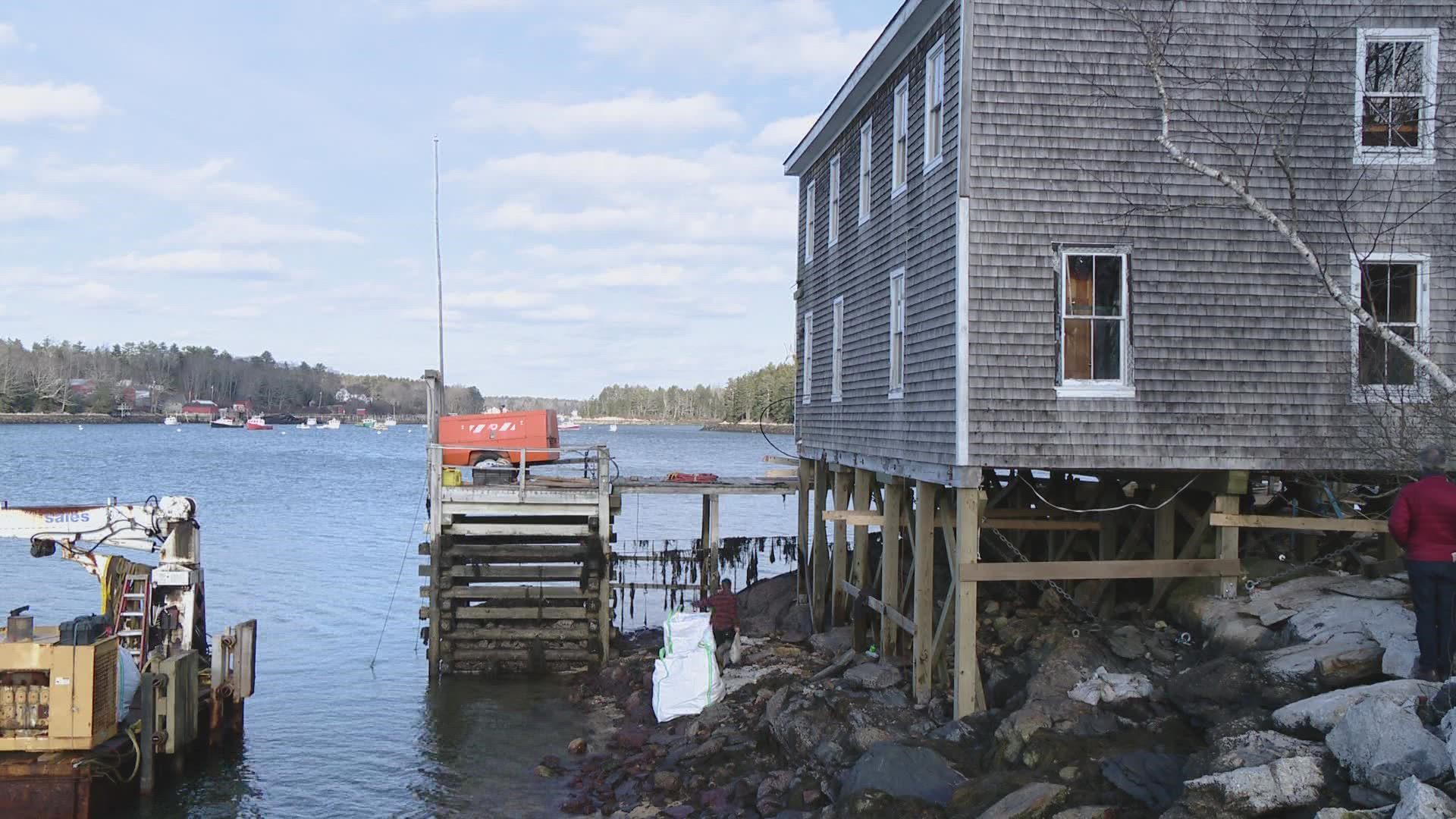BREMEN, MAINE, Maine — On Hog Island off the coast of Bremen, the Queen Mary is not a ship but a building, a former ship’s chandlery perched on a rocky ledge on the water’s edge since the 1800s. For decades it has been part of the Hog Island Audubon Camp, used by visitors as a dorm and education center. Its design is clean and timeless, a classic example of coastal Maine architecture.
Several years ago the people who run the camp realized that the building faced a threat that was already present and growing worse—rising sea levels caused by climate change. “The building’s been sitting here for 150 years or more and it’s been just fine,” says Hog Island facilities manager Eric Snyder. “And now we’re starting to see those effects.”
In recent years, a normal high tide would come up to within two feet of the bottom of the building. When the tide ran unusually high, the water would hit the joists under the structure. “I had to move the service entrances into the building,” Snyder says, “because the water was coming up over the electrical entrances and things like that.”
Realizing that inaction was not an option, the people who run the camp along with the nonprofit group Friends of Hog Island spent several years obtaining the necessary permits to permanently raise the building three feet higher. In October, Jewett Builders began jacking the Queen Mary up, slowly and methodically.
“Some days you can only work the low tide to set the base infrastructure,” says Don Jewett, who’s supervising the project. “And then other days you can only work at high tide. So that means half days here and there.”
Elevating the building will cost about $250,000. Friends of Hog Island, whose membership includes many former campers, is paying the bill. For them, preserving this special place is almost a calling. “I don’t think you can really ask more,” says Juanita Roushdy, the president of the group, “than to be able to connect the past, the present, and the future.”

